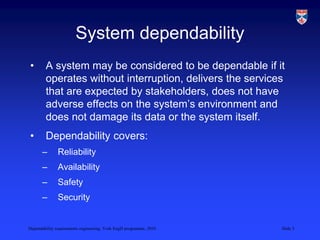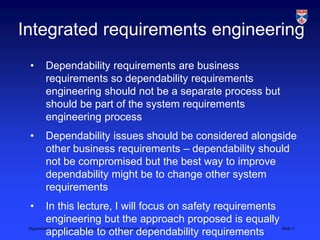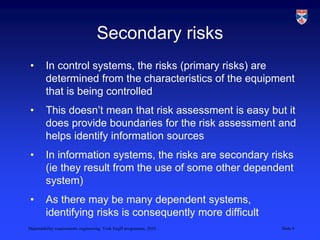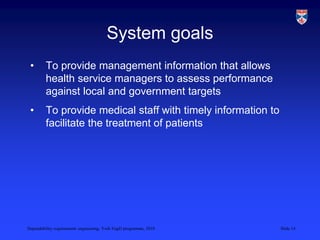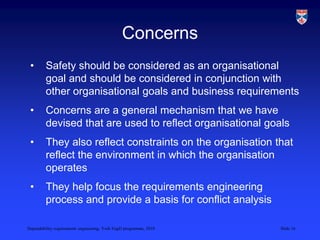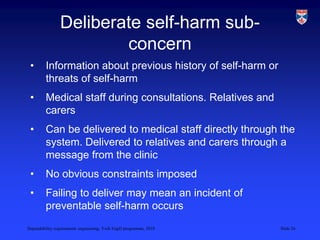This document discusses dependability requirements engineering for safety-critical information systems. It introduces the concepts of system dependability, dependability requirement types, and the need for integrated requirements engineering. Dependability requirements should be considered alongside other business requirements. The document uses an exemplar healthcare records management system to illustrate how concerns can help identify safety requirements and requirements conflicts. Concerns reflect organizational goals and help bridge the gap between goals and system requirements.


